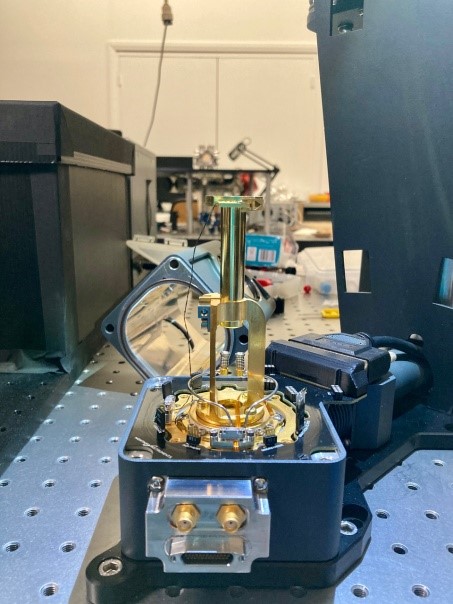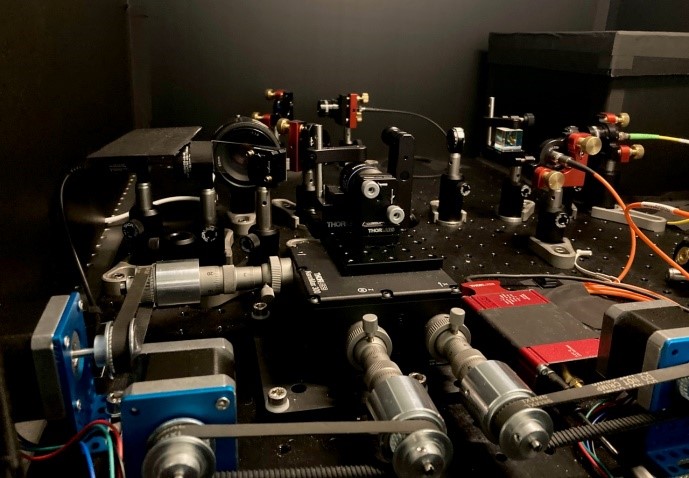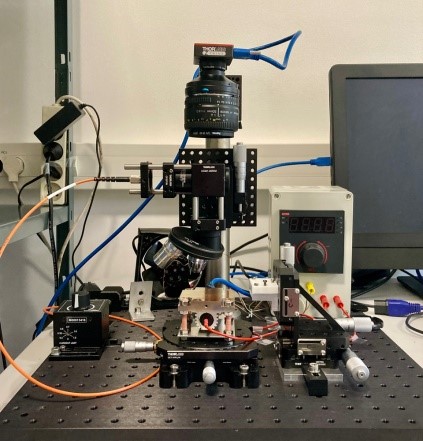Quantum nano-photonics with 2D crystals
Spontaneous emission limits efficient control of light-matter interactions and is detrimental for many applications ranging
from quantum information to metrology (e.g. photon storage, photon-spin interfaces, quantum metrology). By harnessing quantum
collective effects (e.g. subradiance), we propose an approach to tailor photon emission. We envision the first sub-lambda
solid-state array of individually tunable quantum emitters using 2D crystals, a special class of materials combining self-assembled
emitters, tightly bond excitons and strong light-matter interactions. We address fundamental aspects of subradiant states
(decoherence, role of geometry). We also use these systems to tailor emission from strongly correlated subradiant states to selective
radiant states which is beneficial for quantum sensing and photon storage applications.
While several groups studied Moiré superlattices of confined excitons in heterobilayers – and proved single photon emission –, these
systems suffer from lattice reconstruction, they lack of in situ individual tuning, and their geometry is determined by the crystal symmetry.
In our team, we envisions an alternative strategy, based on two intrinsic criteria of TMDs: i) exciton binding energy is a fraction of eV
(dominant at room temperature, 10-100 larger than conventional semiconductors); ii) auto-assembly of QEs when the 2D crystal is transferred
on top of a nano-pillar (i.e. the QE is located at the nano-pillar position). These two simple arguments unlock large Stark tuning without the
risk of exciton dissociation and the possibility to position QE at sub-λ precision. It is a plus compared to other platforms (Qdots, molecules,
coloured centres) where low exciton binding energy, dielectric environment requirements and/or positioning (growth, implantation, nano-manipulation)
still hinder the access to “sub-λ” and “in situ tuning” regime. We expect to break this barrier in this project and expand the state of the art of
deterministic implantation of QEs in 2D crystal. Solid-state QEs sub-λ arrays can be complementary to optical lattices used in atomic physics:
it enables much smaller lattice parameter (at least one order of magnitude smaller) and larger dipole-dipole interactions
(localized excitons have strong electrical dipole moment compared to atomic magnetic dipoles). Furthermore, the 2D community has recently
focused on the development of efficient coupling of QE in 2D crystals with photonic circuitry (waveguide, plasmonic lattices).
These efforts have reached a mature stage, enabling substantial contributions to the field of waveguide QED to investigate light-matter
interaction by coupling artificial atoms to a one-dimensional continuum of modes.



Responsable : Antoine Réserbat Plantey
Bio express :
- 2012: PhD in nanophysics, Institut Néel (France)
- 2012-2017: Post-Doc at ICFO (Barcelona, Spain). Groups of Frank KOPPENS and Adrian BACHTOLD. Quantum nanophotonics with 2D crystals
- 2017-2022: Research fellow at ICFO (Barcelona, Spain), Group of Frank KOPPENS
- 2022-now: CR-CNRS at CRHEA. Quantum nanophotonics with 2D crystals
Selected publications :
- Single organic molecules for photonic quantum technologies, C. Toninelli et al., Nature Materials 20, 1615 (2021)
- Quantum Nanophotonics in Two-Dimensional Materials, A. Reserbat-Plantey et al., ACS Photonics 8, 85 (2021)
- Electrical Control of Lifetime-Limited Quantum Emitters Using 2D Materials, K. Schädler et al., Nano Letters. 19-6, 3789 (2019)
- Electromechanical control of nitrogen-vacancy defect emission using graphene NEMS, A. Reserbat-Plantey et al., Nature Communication 7, 10218 (2016)


